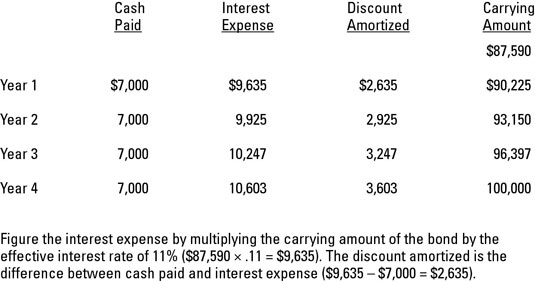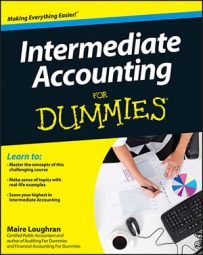A bond discount is relevant when a bond issues at less than face value. How do you account for the transaction in the following example? The figure shows how to calculate the discount on bonds payable.
A company issues a $100,000 bond due in four years paying 7 percent interest annually at year end. So that’s $7,000 interest expense per year ($100,000 x .07).
Market rate for similar bonds is 11 percent. You have to use two tables to figure this one out. Use the present value of 1 table for the bond face value factor (.65873) and the present value of an annuity for the interest payment factor (3.10245).
The present value of the bond is $65,873 ($100,000 x .65873). The present value of the interest payments is $21,717 ($7,000 x 3.10245).

The journal entry to record this transaction is to debit cash for $87,590 and debit discount on bonds payable for $12,410. The credit is to bonds payable for $100,000 ($87,590 + $12,410).
Now, what about the interest expense and amortization of the bond discount? Going back to the facts, this bond pays $7,000 ($100,000 x .07) interest annually at year end. So that’s $7,000 interest expense per year. And remember, the effective interest rate is 11 percent.
Here is the schedule of bond discount amortization for this issuance.

The journal entry to record Year 1 is to debit interest expense for $9,635. The credits go to discount on bonds payable for $2,635 and cash for $7,000.

